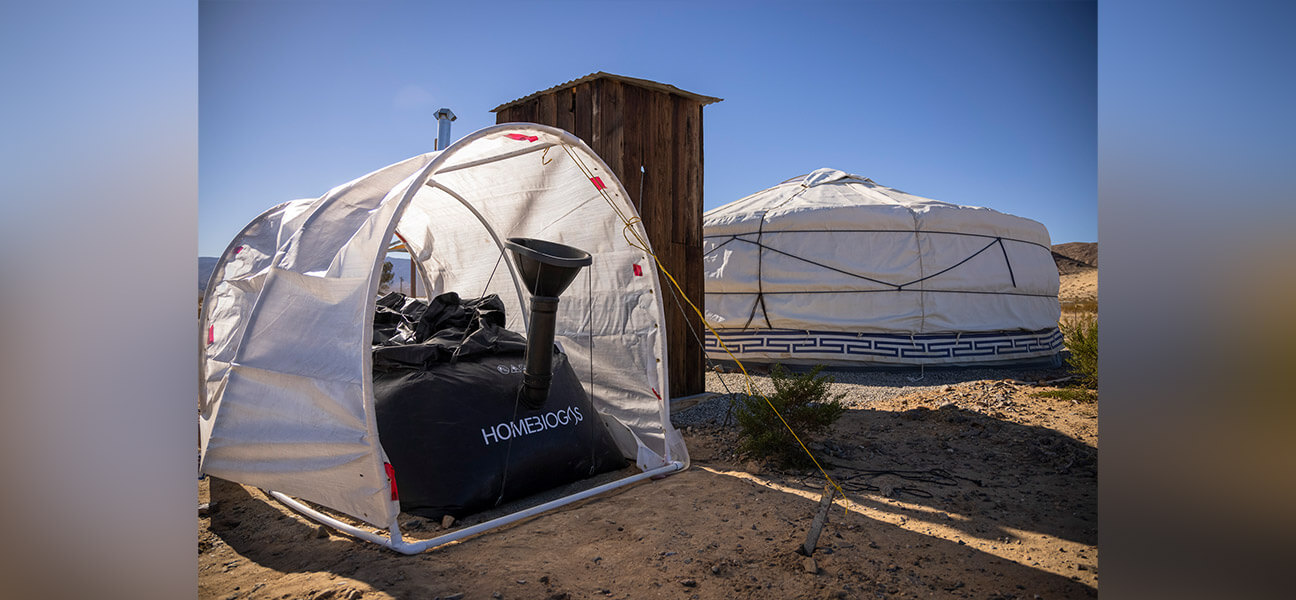28 Palms Ranch, an eco-yurt village located at about 15 miles to each of the entrances to Joshua Tree National Park in California, has turned to an eco-friendly system to solve its problem of not having an underground septic system or access to a local sewer—and in the process has eliminated its need for propane.
Each system takes in animal, food and human waste to create biogas and liquid fertilizer. Biogas is a gas produced from the decomposition of organic matter by bacteria in the absence of oxygen (anaerobic digestion). Biogas is smokeless, flammable gas typically composed of 60% methane and creates a blue flame when burned, just like LPG or natural gas, and is 20% lighter than air.
Oshik Efrat, CEO, HomeBiogas, said that the system helps to solve a major environmental issue. “Today, the world produces over 2 billion tons of solid waste, and that’s expected to grow to 3.4 billion tons by 2050,” he said. “By volume, global waste includes 44% food and organics, which is where the HomeBiogas solution comes in. A U.S. Environmental Protection Agency (EPA) report from July 2020 on wasted food measurements estimated that the hospitality and institutional sectors, which are only responsible for 25% of total food waste, generated 24 million tons of waste in 2016.”
He said that hotels are ideal customers for his product and others like it. “Hotels create an enormous amount of food waste, have a need to dispose of it discreetly and usually sit on a piece of land. By taking up only two parking spots, a hotel will be able to place a HomeBiogas Commercial System which will not only save on waste management expenses, but will also save on the water heating bill and save the earth.”
The on-site commercial HomeBiogas system can convert up to 660 lbs/day (300 kg) of food waste into renewable gas for heating water for the hotel’s various needs. The system can heat up to 9,600 liters of water a day. The food waste goes into a grinder, which automatically feeds it into the 3,700-gallon digester tank. The system also reduces greenhouse gas emissions by 1 ton/day, thus helping the hotel reach their ESG and zero-waste goals.
The biogas produced is used for cooking. Stevenson plans to plant approximately 75 trees around her property and will be using the resulting fertilizer from the HomeBiogas system in the planting process. Trees and plants already on the property have been using the fertilizer. She reports that guests really love the concept and that she’s enjoyed teaching them about creating and using biogas and is pleased with how much younger guests love feeding the system their food scraps.
